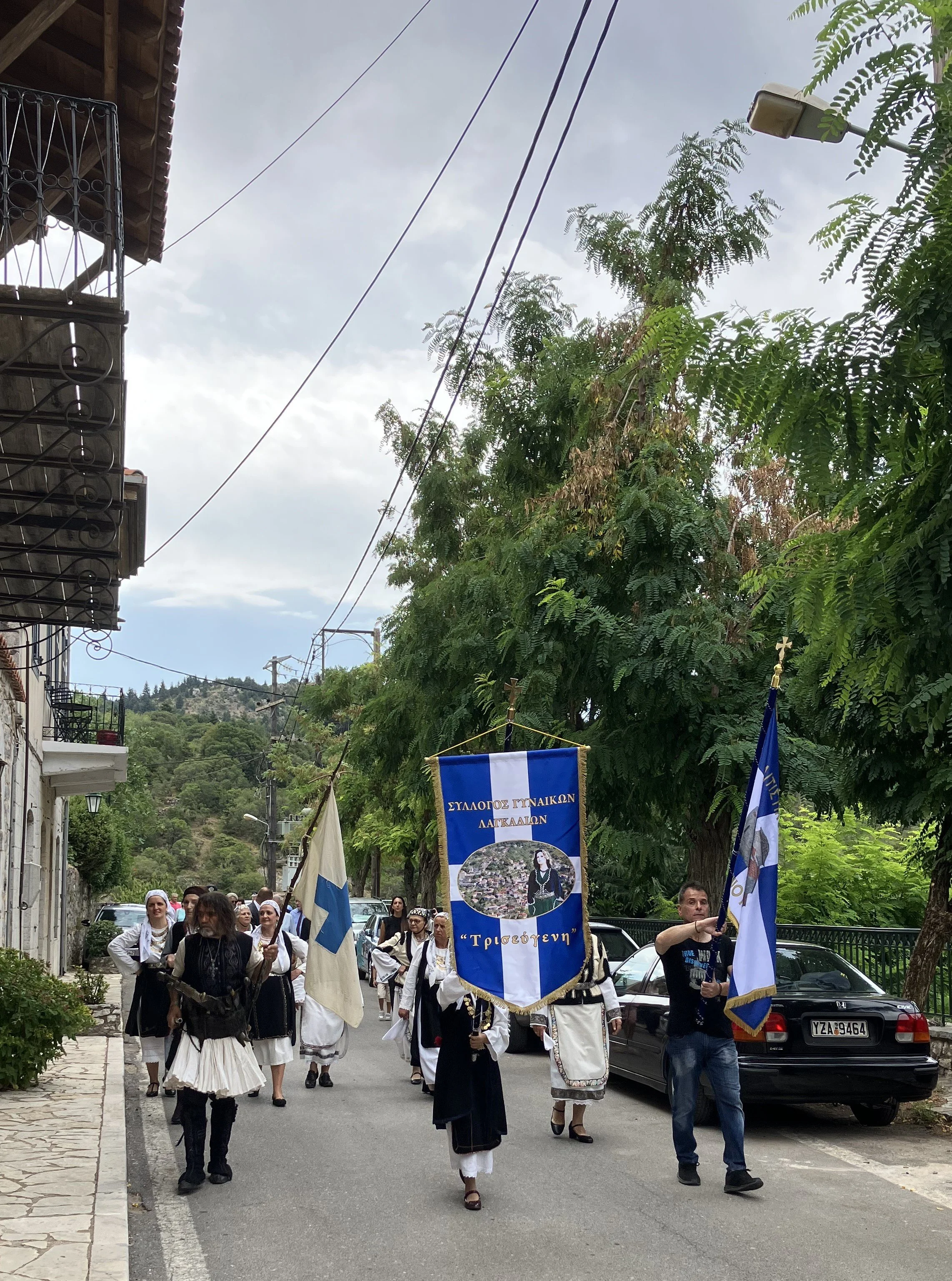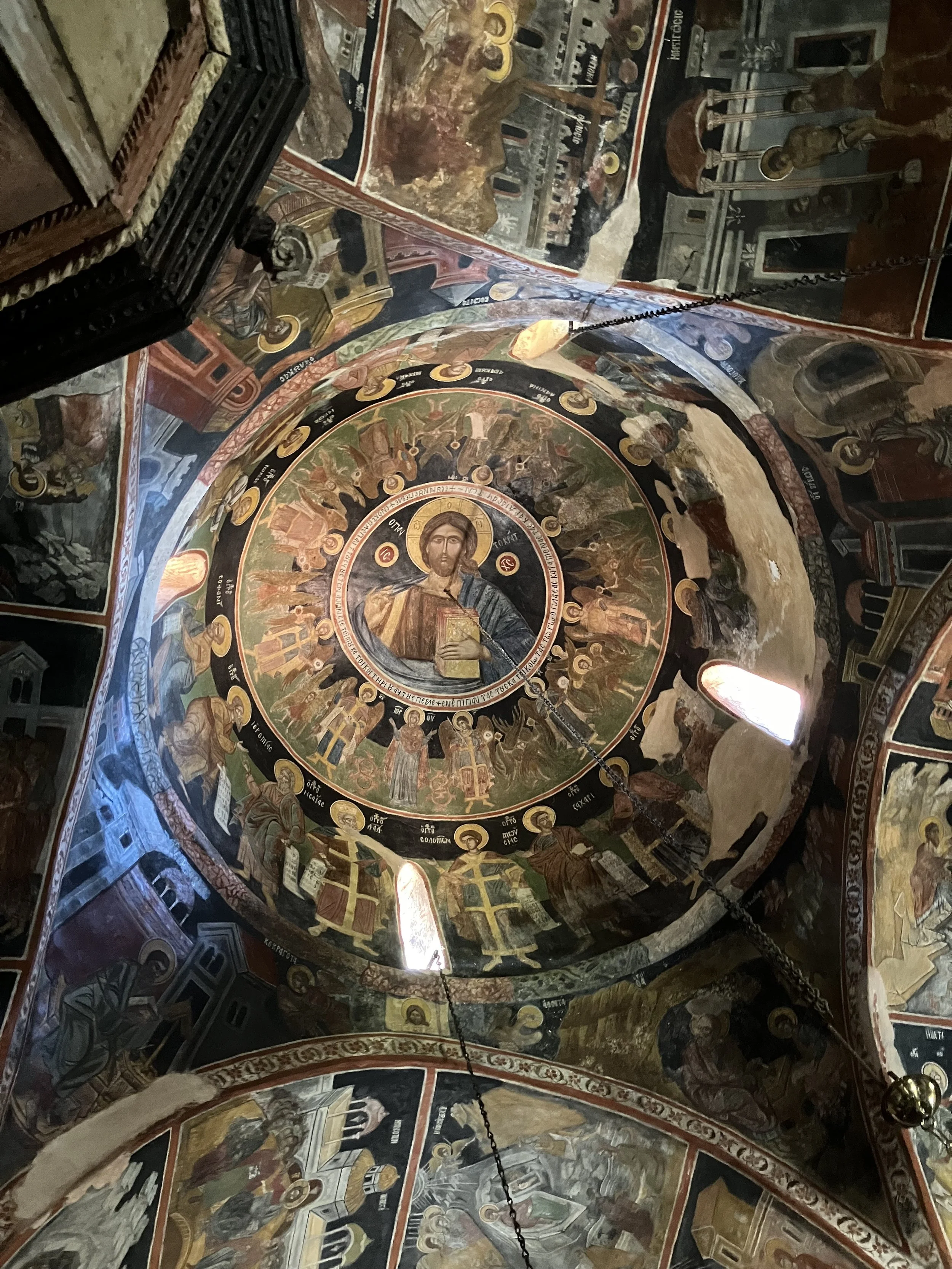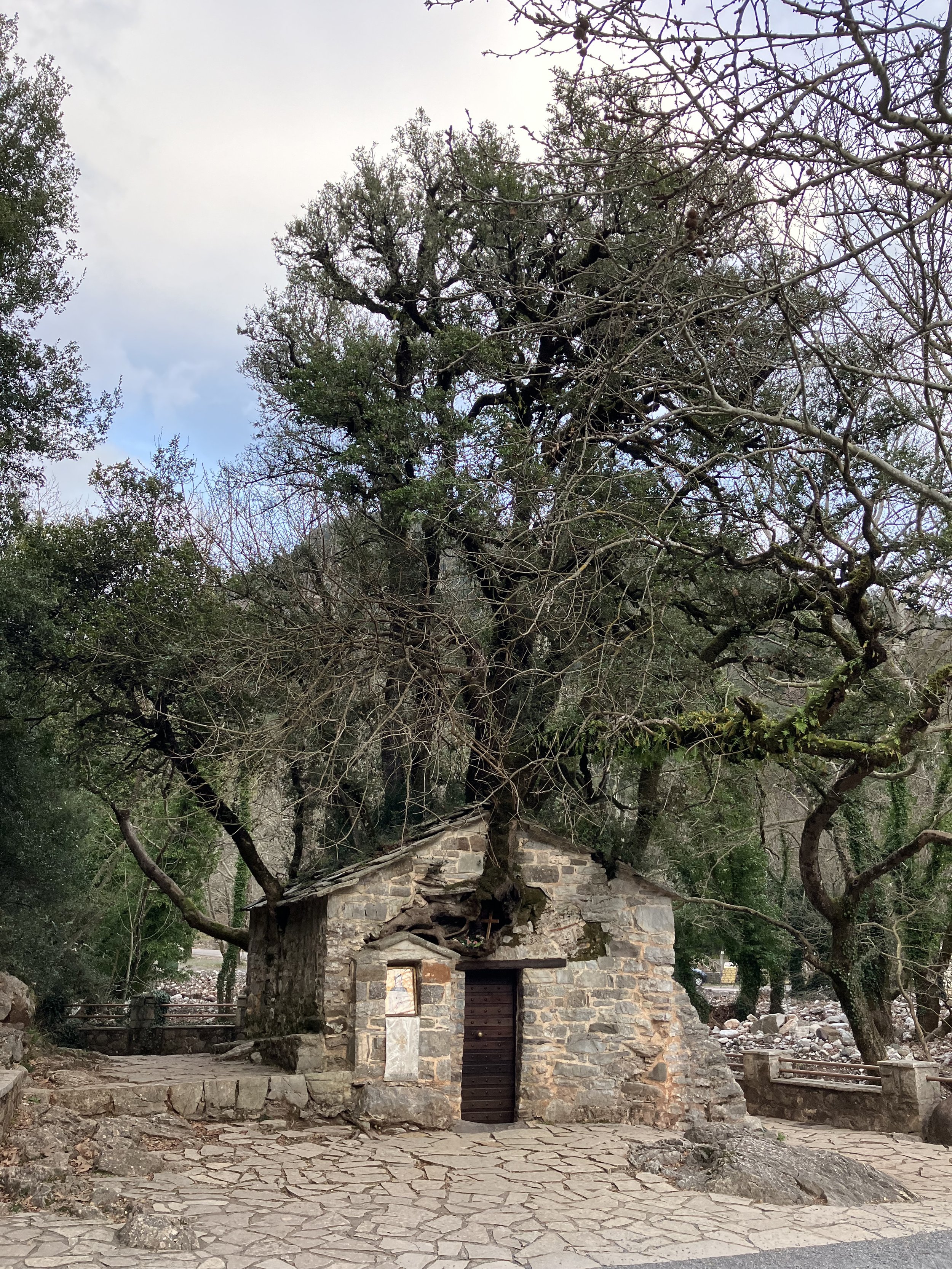Stemnitsa
An archetypal Arcadian Mountain village, Stemnitsa (Slavic ‘a wooded place’) nestles tightly in the mountain crags of Klinitsa, on the foothills of the Mainalon mountain. The village, steeped in history, inward looking and defensive, is originally built around the more defensible neighbourhood, the ‘Kastro’, but afterwards spreads up the southwest facing foothills forming ten neighbourhoods named either from natural occurring springs or churches, the centres of village life.
The villagers, with little opportunity to earn a living from the mountainous terrain, turn to trade and focus on metalworking, quickly becoming one of the main centres of trade and crafts in Greece from 1700s. Reaching nearly a thousand inhabitants their work included religious artifacts, weaponry, silver and gold jewellery and church bell casting, the alleys full of ground floor noisy workshops. To protect their trade, they developed their own secret language, the Mestitsiotika. As the men travelled half the year to sell their goods, the women became key figures of their households.
The metalworking skills of the inhabitants meant they became a centre for weapon manufacturing for the Greek revolution in 1820’s. The village became the favourite hiding place of famous fighters including Kolokotronis and his sons and was the centre for the first official gathering of the Greek parliament, 27th May 1821, at the Monastery of Zoodoxos Pigi at the outskirts of the village.
This silversmithing tradition lives on in the Silversmithing Academy and the jewellery shops that you see on the main street. The busy main village square is at 1083m height, its numerous coffee shops vibrant with life throughout all seasons. It is the start for numerous village walks. Head eastwards to the Monastery of Zoodoxos Pigi and beyond to the ‘Mother of Fountains’ or up to the Kastro to see the views down the gorge from the Heroon. Westwards, walking on the Dimitsana road you reach the ‘Aeraki’ where, on a clear day you have panoramic views to the castle of Karytaina and over to the Ionian Sea and the island of Zakynthos.
Further afield you can explore the Lousios Gorge with its fast flowing freezing river and the famous 16th c. monasteries as well as the remains of ancient Gortyn, 335 BC. an important shrine and centre of healing to the god Asclepius or head to the fascinating Open-Air Water Power Museum, in Dimitsana. Further afield you can visit Karytaina castle, the ‘Toledo’ of Greece or Andritsaina and the Temple of Apollo in Vases.





















Arcadia
Mythical Arcadia, nestled in the mountainous heart of the Peloponnisos in southern Greece, is a land of rivers, deep forested gorges, wild flower meadows, medieval castles, Byzantine churches and monasteries, traditional villages and ancient cities. The pastoral character of Arcadian life bred from its mountainous isolation came to stand for the epitome of the lost paradise in Roman poetry and in the literature of the Renaissance. In the very heart of Arkadia is mountainous Gortynia with the famous twin villages of Dimitsana, and Stemnitsa. Hard to access in the past, it became a hiding place for heroes and fighters of the Greek revolution in 1821.
The unique fir mountains forests and untouched nature has made Arkadia a haven for ecotourism. The region is home to the European accredited Mainalon Trail, 75km trail that links Langadia to Stemnitsa village through various villages and forest trails. Opportunities for other outdoor activities including Mountaineering and Skiing on the Mainalon mountain itself but also Canyoning, River trekking and Rafting in the surrounding Lousios and Alpheios rivers as well as Horseriding are available throughout the seasons.
Peloponnisos is famous for its culinary choices, coming 2nd place in the World Taste Atlas Awards 2024. Arkadia contributes with its excellent local dairy products, lamb and goat dishes, the famous Menalon honey, Meli Elatis, and the ever-present walnut cakes. It is emerging as a culinary gourmet destination too with young chefs breathing new life to traditional Arcadian “peasant cooking” in the nearby villages and towns. We will be delighted to share our knowledge.
The area is also home to the renowned Mantineia wine-producing region celebrated for its distinctive white wines and local wineries have organised shops and tours.














